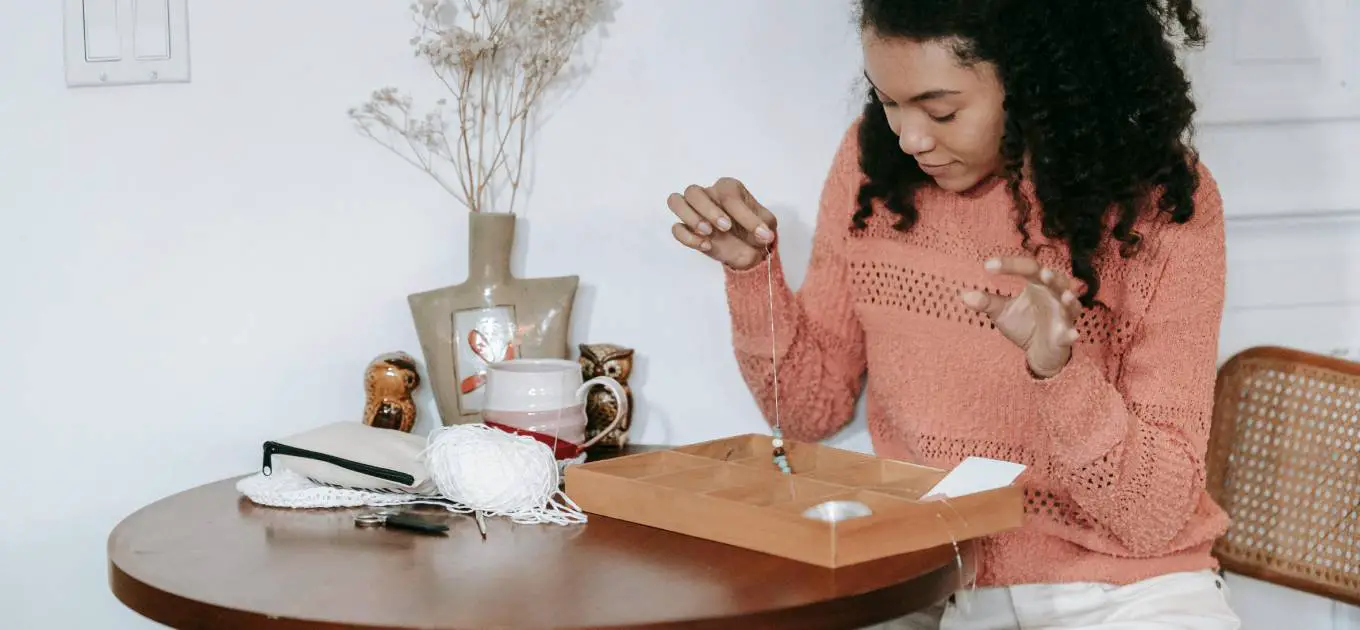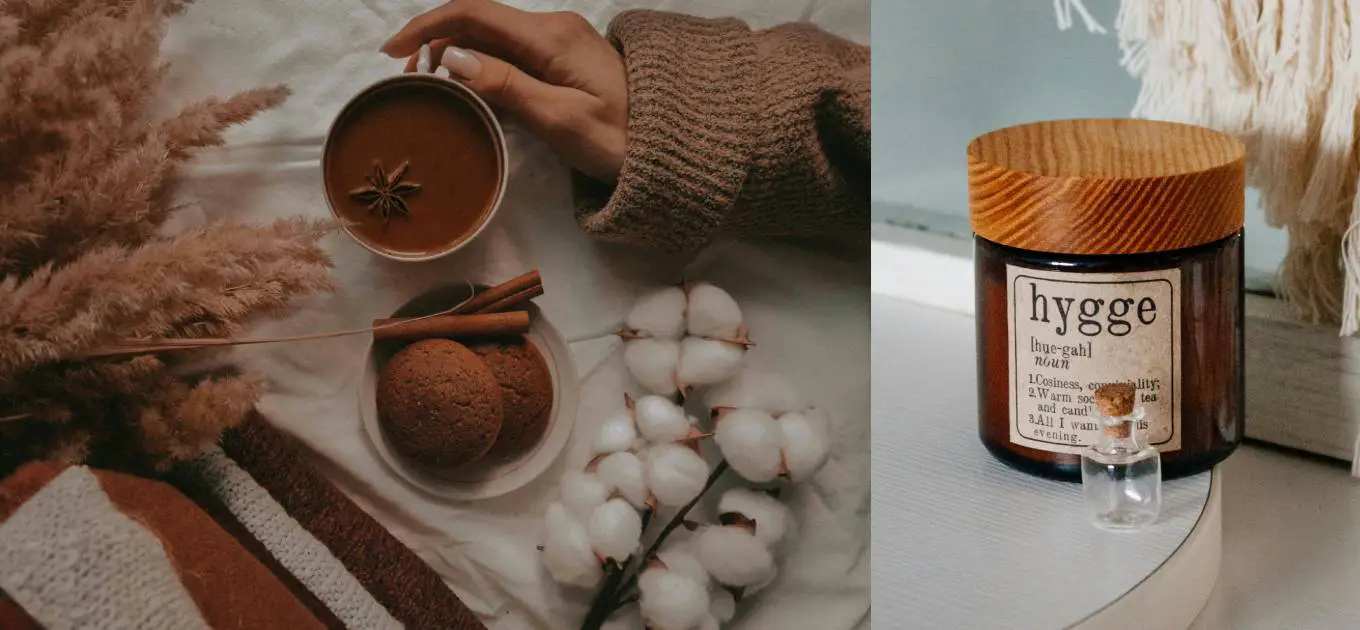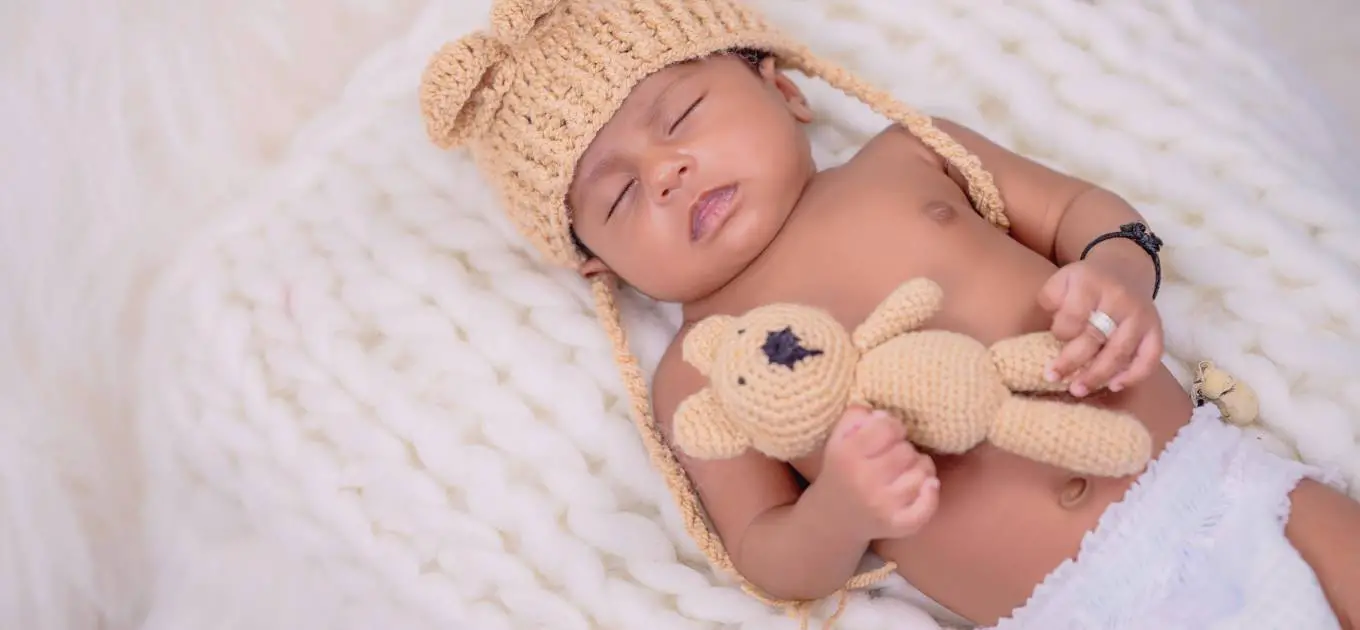
How to Knit a Baby Blanket
September 7, 2024 by Kate
As a soon-to-be first-time mum, I figured I’d try my hand at knitting a baby blanket—because, you know, why not add one more project to my to-do list before baby arrives? To my surprise, knitting a baby blanket has been way easier (and more fun) than I expected! Don’t get me wrong, I’m no expert, but if I can knit with a growing belly making it feel like a mini workout, then trust me, you can too! So grab your needles, cosy up, and let’s create something soft, sweet, and made with love for your little one.

What You Need to Knit a Baby Blanket
- Wool: Choose soft, baby-friendly wool. Double knit baby blanket knitting patterns (DK) or worsted weight are perfect choices.
- Needles: 5mm knitting needles (straight or circular) work best for most baby blanket patterns.
- Pattern: Follow a simple knit baby blanket pattern—there are many free knit patterns for baby blankets available for beginners!
- Yarn Needle: For weaving in loose ends once you’ve finished knitting baby blankets.
- Scissors: A small, sharp pair to cut the wool when needed.
- Cosy Spot: Find a comfortable space to relax as you knit away at your easy knit baby blanket.
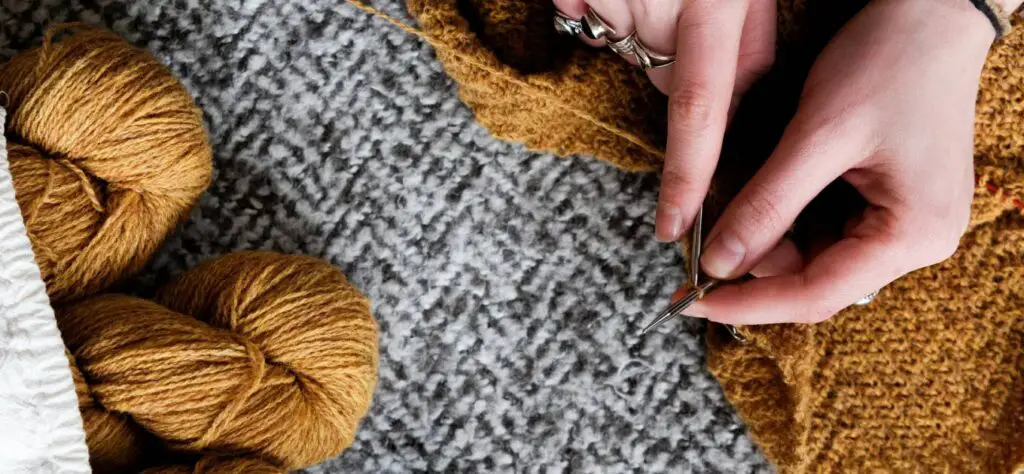
Choosing the Right Wool for Your Baby Blanket
When knitting a baby blanket, picking the right wool is just as important as those midnight snack cravings during pregnancy! Your baby’s skin is super delicate, so you’ll want wool that’s soft, cosy, and can handle plenty of snuggle sessions (and possibly a few spills!). Let’s break down the types of wool, their textures, and how to choose the best one for your easy knit baby blanket adventure.
Different Types of Wool
- Merino Wool
Merino wool is basically the softest cloud you could ever wrap your baby in! It’s lightweight, breathable, and super cosy—like your favourite pair of pjs. It also magically keeps your baby warm without overheating, which is a huge bonus when they can’t exactly tell you they’re too hot or cold (unless crying counts).
Why Choose It: Merino is soft, warm, and hypoallergenic, making it perfect for your baby’s sensitive skin. Plus, it’s durable enough to survive plenty of baby cuddles. - Cotton-Wool Blends
This is like the hybrid car of the wool world—best of both! It’s breathable, lightweight, and still gives you a bit of that woolly warmth. Babies are like little furnaces half the time, so this blend keeps them comfy without turning into a mini sauna.
Why Choose It: Ideal for spring or summer babies. It’s machine-washable (thank goodness!) and light enough for daily use. - Alpaca Wool
If merino wool is a cloud, then alpaca wool is a hug from a teddy bear. It’s soft, fluffy, and just a smidge warmer than merino, making it great for winter baby blankets. Though, fair warning—this stuff can get so cosy, your baby may never want to let go!
Why Choose It: It’s ultra-soft and hypoallergenic. However, alpaca tends to be pricier, so maybe save it for a super special blanket (a.k.a. the “only comes out for grandma” blanket). - Cashmere Wool
Ah, cashmere—the VIP of the wool world. If you’re feeling fancy and want your baby to nap in luxury, this is your wool! It’s soft, warm, and lightweight, but it does need a bit more TLC than other options. Hand-washing, anyone?
Why Choose It: This is for when you want to spoil your little one with a blanket so soft it feels like a dream (but maybe reserve it for special occasions… or when you’re sure they won’t spit up). - Acrylic Wool
Acrylic is your everyday hero—affordable, colourful, and durable. It’s not technically wool (it’s synthetic), but it gets the job done! It’s also easy to wash and doesn’t come with a high-maintenance care label. Bonus: It comes in just about every shade under the sun, so you’ll never be stuck picking between “blue” or “slightly lighter blue.”
Why Choose It: If you want a practical, budget-friendly option that can survive daily use—and possibly even the washing machine—this is your go-to!
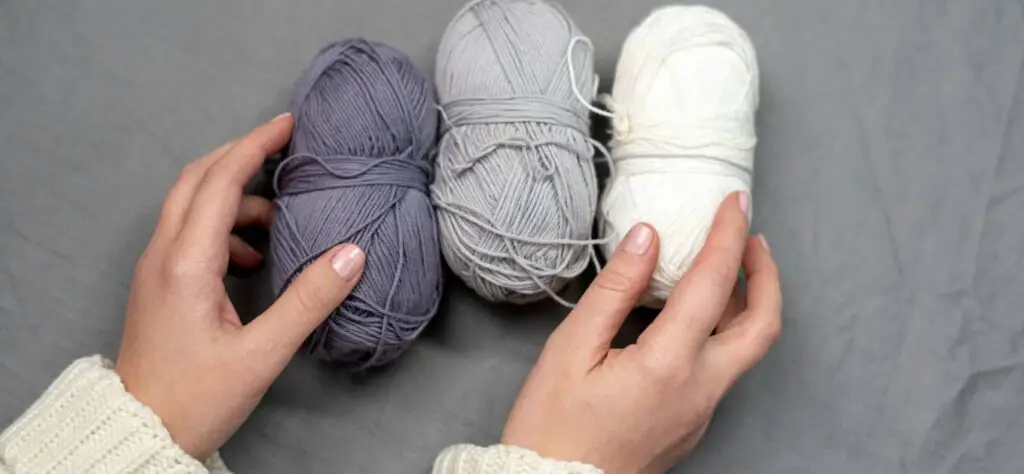
Textures and Softness
- Smooth Wool
Smooth wool, like merino or a cotton-wool blend, is perfect if you’re aiming for that classic soft feel. These wools create a smooth, gentle texture that’ll feel like heaven against your baby’s skin—ideal for those precious tummy time sessions! - Chunky Wool
Want to go for something a little more, well, extra? Chunky wool can add texture and warmth, like knitting your baby a big, soft marshmallow. Just make sure the wool you pick isn’t too rough, or you might end up with a blanket that’s more itchy than cosy (think: the sweater from grandma that you wore once).
Tip: Chunkier wools are great for adding some weight, which can help keep your baby feeling snug as a bug (in a rug). - Self-Striping Wool
Feeling adventurous with colours? Self-striping wool does the hard work for you—no need to switch wools halfway through. The colours magically appear as you knit, creating beautiful stripes without any extra effort. It’s like knitting and being an artist at the same time!
Colour Choices
- Pastels: Soft shades like baby pink, powder blue, or mint green are always a winner for baby blankets. They’re calming, sweet, and won’t clash with the rest of the nursery. Plus, they’ll look extra cute in all those “sleeping baby wrapped in a blanket” photos!
- Neutral Tones: If you’re more into timeless, classic vibes, neutrals like grey, cream, or beige are fantastic. They’re unisex and blend with any decor, plus they hide stains a little better (you’ll thank me later).
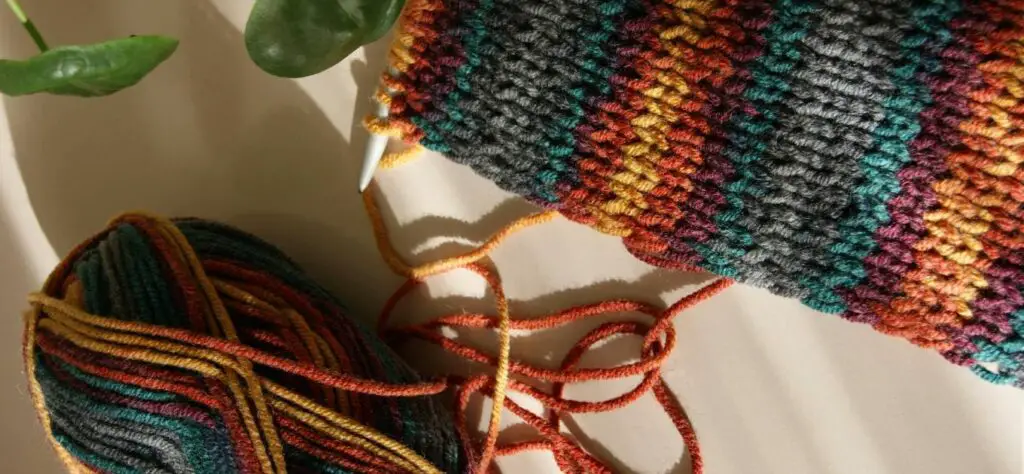
- Bold Colours: Want to make a statement? Bold colours like teal, red, or mustard yellow can add a fun, modern twist to your baby blanket. Just be prepared for everyone to say, “Wow! Where’d you get that?!” at the baby shower.
- Self-Striping or Gradient Wool: Can’t decide between a few colours? Self-striping wool or gradient wool gives you the best of both worlds. It automatically transitions between shades, so your blanket ends up looking like a work of art, without all the colour-changing hassle.
Tip: Match your colour choice with the nursery or the parents’ style for a personalised touch. Just avoid white if spit-up is likely to make an appearance!
Durability and Care
Let’s face it—babies are messy. Between the milk, the drool, and who knows what else, your baby blanket will need to handle a lot. So, picking wool that’s easy to care for is a must.
- Machine-Washable Wool: Merino blends or superwash wool are life-savers. They’re soft, durable, and—best of all—can go straight into the washing machine. No need for delicate hand-washing here, which is a huge relief when you’re juggling a baby (and, you know, everything else).
- Hand-Wash Only Wool: Some luxury wools, like cashmere or alpaca, need a bit more care and love. Sure, they’re soft and gorgeous, but they also prefer a good hand-wash over a tumble in the machine. Think of them as the “special occasion” wool—best saved for when baby’s looking to impress!
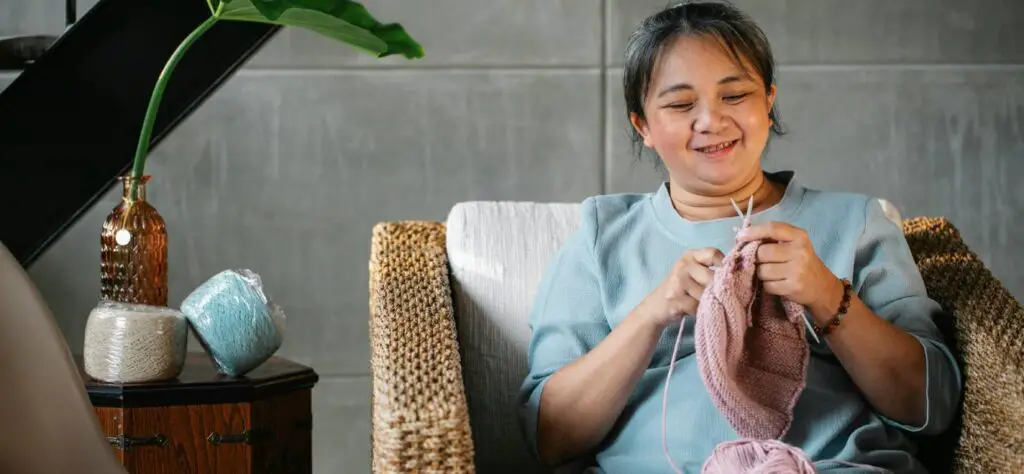
- Acrylic Wool: Acrylic can go through the wringer (literally) without losing its shape or colour. It’s easy-care, machine-friendly, and built to last, making it perfect for baby blankets use when spills and stains are just part of the gig.
Tip: Always check the wool label for care instructions before buying. If it says “hand-wash only” and you know you’re not about that life, maybe opt for a more practical option.
The Knitting Process: Step-by-Step Guide for Beginners
Casting On
Casting on is the foundation of your knitting project—it’s how you get the first row of stitches onto your needle. For most baby blanket pattern knit designs, a long-tail cast-on method works well. This method creates a sturdy, yet flexible edge, perfect for a blanket. To cast on, leave a tail of wool (about 2-3 times the width of your project) and use both the tail and the working wool to loop your first stitches onto the needle.
Tip for Beginners: Don’t pull the wool too tightly while casting on. You want the stitches to slide easily along the needle without being too loose.
The Knit Stitch
The knit stitch is the simplest and most basic knitting stitch, and it’s likely what you’ll use for the majority of your easy knit baby blanket. To knit, hold the needle with the cast-on stitches in your left hand and the empty needle in your right. Insert the right needle into the first stitch on the left needle, wrap the wool around the right needle, and pull it through. Slip the old stitch off the left needle. Repeat this process for each stitch.
Tip for Beginners: Keep your hands relaxed while knitting to avoid overly tight stitches. A tight grip can make it harder to move the stitches along the needle and may affect the overall tension of your project.
The Purl Stitch
The purl stitch is essentially the opposite of the knit stitch and creates a bumpy texture on the fabric. To purl, hold the needles as you would for a knit stitch. Instead of inserting the right needle from front to back, you’ll insert it from back to front. Wrap the wool around the right needle, then pull it through and slip the old stitch off the left needle.
Tip for Beginners: Alternate between knit and purl stitches to create different textures. For example, knitting every row creates garter stitch, while alternating between knit and purl rows creates stockinette stitch (smooth on one side, bumpy on the other).
Following a Simple Baby Blanket Pattern
Most beginner baby blanket knit patterns are designed to be easy and repetitive, using only knit stitches (garter stitch) or alternating between knit and purl rows (stockinette stitch). Here’s a quick outline of how a basic baby blanket might look:
- Cast On: Start by casting on 110 stitches with 5mm needles and soft baby-friendly wool.
- Rows 1-100 (or until desired length): Knit every row for a garter stitch blanket, or alternate between knit and purl rows for a textured blanket.
- Cast Off: Once you’ve reached your desired length, bind off your stitches loosely to maintain an even edge.
Tip for Beginners: Keep your stitch count consistent. Occasionally count your stitches as you knit to ensure you haven’t accidentally added or dropped any.
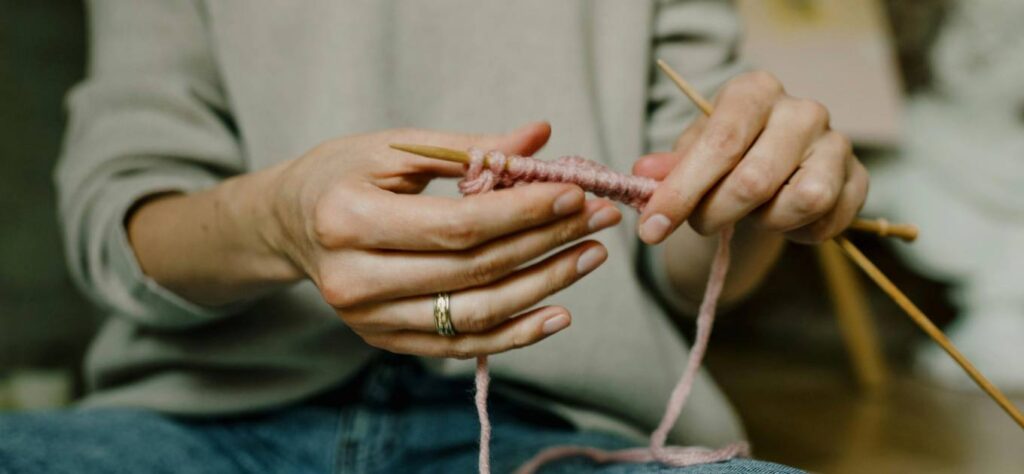
Maintaining Even Tension
One of the biggest challenges for beginners is keeping tension consistent throughout the project. Tension refers to how tight or loose your stitches are. If your tension varies, your blanket might end up with uneven edges or a patchy appearance.
Finishing Your Blanket
Once you’ve reached the desired length of your baby blanket, it’s time to cast off. Casting off, or binding off, secures the stitches so they don’t unravel. To bind off, knit the first two stitches, then pull the first stitch over the second one and off the needle.
Continue this process until you’ve worked through all your stitches. Cut the wool, leaving a small tail, and weave it into the edge of the blanket with your yarn needle.
Tip for Beginners: When casting off, keep the stitches loose to avoid a tight edge that puckers.
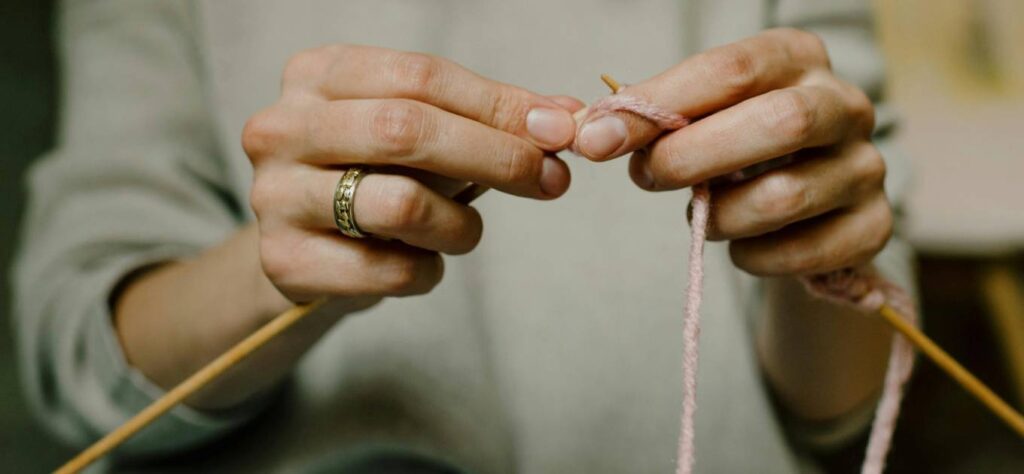
Final Thoughts
So, here I am, officially on maternity leave with four weeks to go until the big day—and let’s just say, knitting this baby blanket pattern knit has been the perfect distraction (and a great excuse to put my feet up). While I can’t control when baby decides to make an appearance, I can control how soft and snuggly this blanket turns out (I hope!).
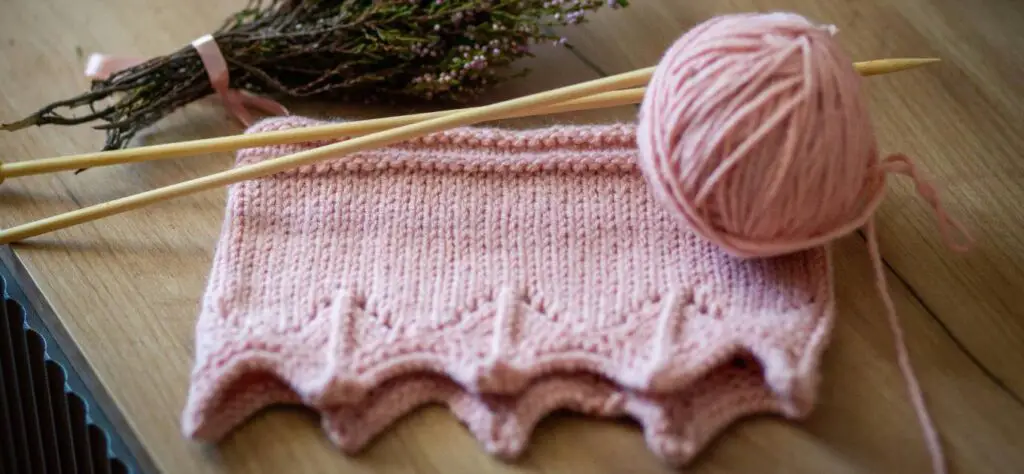
If you’re also on a countdown to baby or just want something relaxing to pass the time, knitting a baby blanket is the way to go. It’s not only therapeutic but also a great way to feel productive while binge-watching all your favourite shows like Bridgerton!
I’d love to hear from you! If you’re a fellow knitting newbie or a seasoned pro, leave a comment below and share your experiences, tips, or even any knitting mishaps (trust me, I’ve had my fair share of dropped stitches).

FAQs
What knitting stitch is best for a baby blanket?
The best knitting stitch for a baby blanket is often the garter stitch. It’s simple, soft, and creates a stretchy, cushioned texture ideal for babies. Other popular options include the stockinette or seed stitch, both offering softness with different visual effects.
How many stitches are needed to knit a baby blanket?
The number of stitches needed to knit a baby blanket depends on the yarn, needles, and blanket size. Typically, for a 30-inch wide blanket using worsted-weight yarn, you’d cast on around 100-150 stitches. Always check your gauge to ensure the right size.
Can you knit a baby blanket with straight needles?
You can absolutely knit a baby blanket with straight needles. Straight needles work well for smaller blankets, but for larger ones, circular needles may be more comfortable as they hold more stitches and distribute the weight better during knitting.


